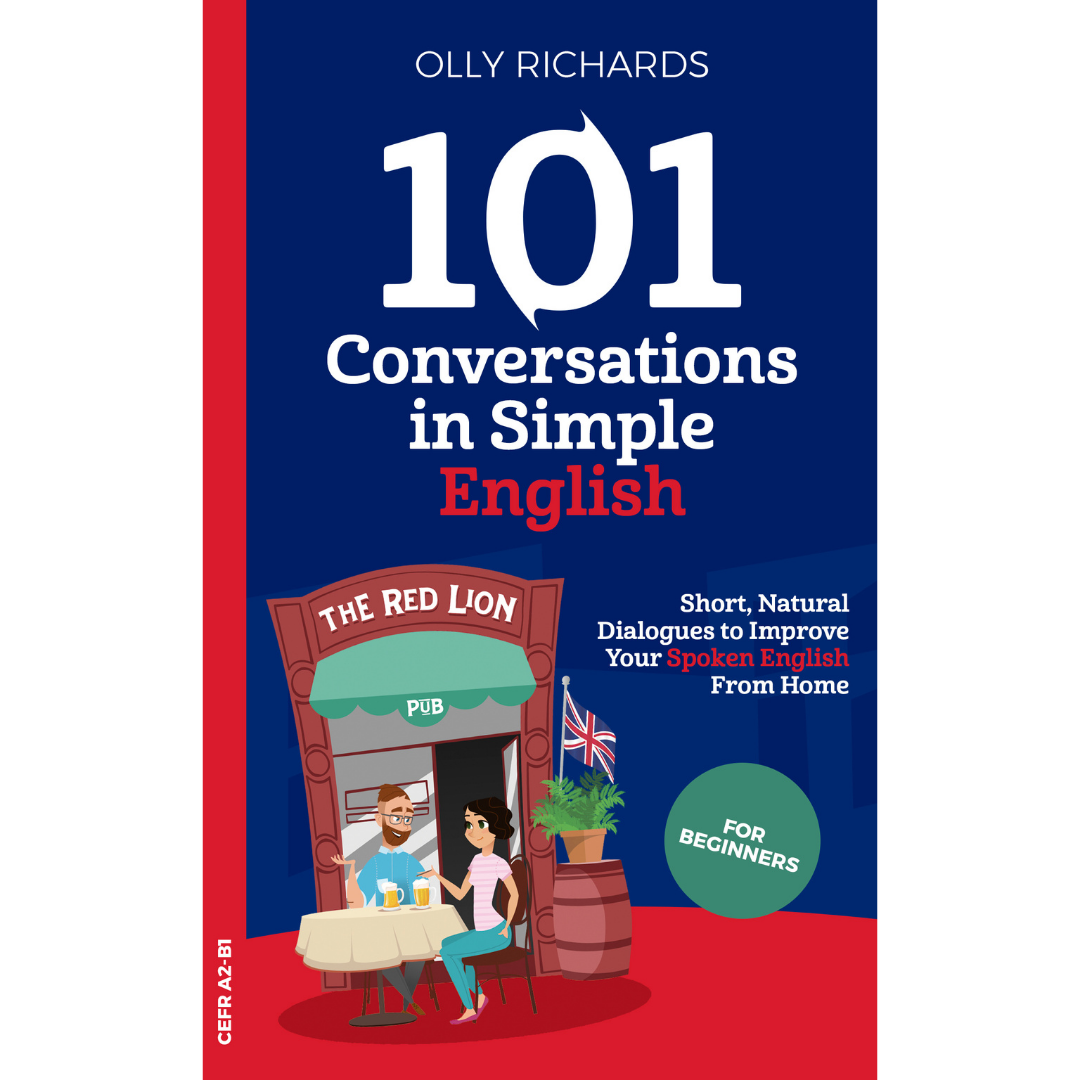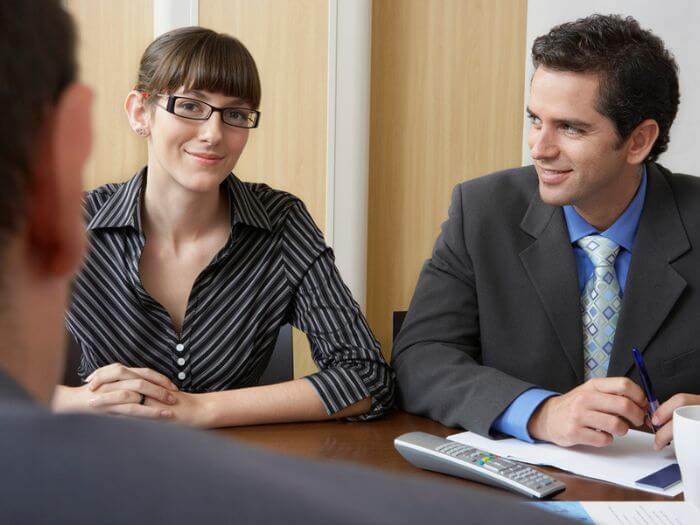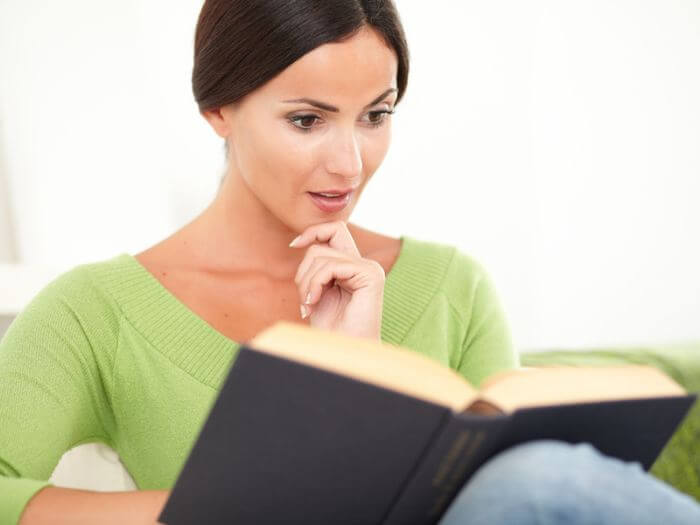The present simple and the present continuous are two of the most common verb forms in English.
And two of the most easily confused ones, too!
This post is here to help you clarify these tenses. You’ll learn how we form them, when we use them, what differences there are between them, and what mistakes you should avoid.
Let’s begin!
Table of Contents
What Is The Difference Between Present Simple And Present Continuous?
You can use both of these verb forms to talk about the “present”. But they're used in quite different ways. The core difference is between permanent situations, where we use the present simple, and temporary ones, where we use the present continuous.
For example, if you live somewhere wet you might say:
- It often rains in this part of the country.
This is a fact about the place where you live, in other words, a permanent situation.
If you look out the window one morning and see rain, you would use the present continuous instead.
- Oh look, it's raining today.
This rain isn't permanent, it's simply the weather at that specific moment.
The table below summarises the main differences between present simple and present continuous.
| Present simple | Present continuous |
| Permanent situations, general truths, and facts that we see as always true – He's tall | Temporary actions that are happening as we speak. – I'm talking on the phone – please be quiet! |
| Things (habits, routines) that happen regularly, always, sometimes etc – I go to yoga class twice a week | Temporary actions that are happening “around now,” not necessarily at the moment of speaking. – She's looking for a job |
| States and senses – This tastes disgusting! | Things or situations that are changing or developing over time. – The population is decreasing in rural areas |
I'll go into more detail later about the differences between present simple and continuous. In the meantime, let's look at how to form them.
Present Simple: How It’s Formed
Let’s start with the verb “to be.”
Positive
I + am + noun phrase or adjective
You / We / They + are + noun phrase or adjective
He / She / It + is + noun phrase or adjective
Like this:
| I | am | into fashion. |
| You / We / They | are | intelligent. |
| He / She / It | is | old. |
The contracted forms are “I’m,” “you’re,” “he’s,” “she’s,” “it’s,” “we’re,” and “they’re.”
Some examples:
- I’m Olly.
- You are very beautiful.
- She’s an artist.
- He is an interesting person.
- It’s important
- We are Italians.
- You’re so intelligent.
- They are in jail.

Negative
I + am + not + noun phrase or adjective
You / We / They + are + not +noun phrase or adjective
He / She / It + is + not + noun phrase or adjective
Like this:
| I | am | not | into fashion. |
| You / We / They | are | intelligent. | |
| He / She / It | is | old. |
The contracted forms are “I’m,” “you aren’t,” “he isn’t,” “she isn’t,” “it isn’t,” “we aren’t,” and “they aren’t.”
Some examples:
- I’m not Cara, I’m Olly.
- You aren’t ugly.
- She isn’t an artist.
- He is not an interesting person.
- It isn’t important
- We aren’t Italians.
- You are not so intelligent.
- They aren’t in jail.
Questions
Am + I + noun phrase or adjective
Are + you / we / they + noun phrase or adjective
Is + he / she / it + noun phrase or adjective
Like this:
| Am | I | not | right? |
| Are | you / we / they | here? | |
| Is | he / she / it | young? |
Some examples:
- Am I Olly? (Yes, I am)
- Are you okay?
- Is she an artist?
- Is he an interesting person?
- Is it important?
- Are we late?
- Are you at home?
- Are they in jail?
Other verbs (like, jump, eat, etc.)
We form the present simple using the base form of the verb, without “to”. This is the same for all subject pronouns except for the third person singular (he, she, it). Third person subject pronouns take the -s.
Like this:
| I / You / We / They | love | pizza |
| He / She / It | loves | going out. |
Some examples:
- He loves Indian food.
- She always does her homework.
- It matters a lot to me.
- They love drinking coffee.
- You live near me.
- I watch TV every day.
- We go to the beach every Saturday.
- She calls me every morning.

Watch out for the spelling of third person verbs. Here are 3 simple spelling rules:
1. We use -es when the base form ends in /s/, /z/, /ʃ/, /tʃ/, or /dʒ/. Here’s one example for each:
- /s/
- miss – misses
- Example: He misses his friends.
- miss – misses
- /z/
- buzz – buzzes
- Example: The bee buzzes around the flower.
- buzz – buzzes
- /ʃ/
- wash – washes
- Example: She washes the dishes every time after dinner.
- wash – washes
- /tʃ/
- watch – watches
- Example: He watches TV every evening.
- watch – watches
- /dʒ/
- judge – judges
- Example: He judges me all the time.
- judge – judges
2. We use -ies to replace the y when the base form of the verb ends in a consonant + y.
- fly – flies
- carry – carries
- study – studies
If the verb ends in a vowel + y, we simply add the -s.
- Play – plays
- Toy – toys
- Enjoy – enjoys
3. Add -es to “go” and “do,” and transform “have” into “has.”
- do – does
- go – goes
- have – has
Negative
Negative sentences are formed by adding “don’t” or “doesn’t” followed by the base form of the verb.
| I / You / We / They | don’t | like | horror movies. |
| He / She / It | doesn’t | live | there. |
Some examples:
- He doesn’t like Indian food.
- She doesn’t like her new boss.
- It doesn’t matter.
- They don’t love to drink coffee.
- You don’t live near me.
- I don’t watch TV every day.
- We don’t go to the beach every Saturday.
- She doesn’t call me every morning.
Questions
The formula for question questions is formed by “don’t” or “doesn’t” followed by the base form of the verb.
| Do | I / you / we / they | need | to go? |
| Does | he / she / it | live | there? |
The short answer is always “Yes + subject + do/does” or “No, subject + don’t/doesn’t”.
Here are two examples from my books:

Detective Smith: Hello, I’m Detective Smith. Nice to meet you. Do you know who the thief is?
Natalie: No, I don’t.
(from 101 Conversations in Simple English: Short Natural Dialogues to Boost Your Confidence & Improve Your Spoken English.)

Carl walked over to Eric. Time was running out. The captain was telling his men what to do.
‘What do you want? You know a way to win?’
‘Umm, yes … Yes, I do. Come here. I’ll tell you.’
(from Short Stories in English for Beginners: Read for pleasure at your level, expand your vocabulary and learn English the fun way!)
If you have a question word (who, what, how long, where, when, why, etc.), this is how you form the question:
| What | do | I / you / we / they | need? |
| Where | does | he / she / it | live? |
Some examples:
- Does he like Indian food?
- Does she like her new boss?
- Does it matter?
- What do they love to drink?
- Do you live near me?
- Who do you watch TV with?
- Where do we go?
- Does she work every morning?
- What do you want for dinner?
- Where does he live?
Let’s end this section about the present simple form with a page from one of my books, 101 Conversations in Simple English: Short Natural Dialogues to Boost Your Confidence & Improve Your Spoken English.
Can you find all the present simple forms in it?
Chapter 3: Camden Market
Natalie and Alice arrive at Camden Market.
Alice: Wow! Look at all this stuff, Natalie.
Natalie: It’s amazing! There are so many shops, and loads of people.
Alice: Look at this watch! Is it an antique?
Natalie: Yes, it looks very old.
Alice: And that painting? Is it an original?
Natalie: It looks like an original.
Alice: Do you think it’s expensive?
Natalie: I don’t think so. Let’s ask.… Good morning. How much does that painting cost?
Seller: Good morning. It costs 50 pounds. Are you interested?
Alice: No thanks. We were just wondering.
Natalie: And this watch, how much is it?
Seller: The watch costs 130 pounds. It’s very old.
Natalie: Thanks!
Alice: Do you think it’s stolen?
Natalie: I don’t know. Maybe! There’s no way of knowing.
Alice: Look at that small shop. It looks interesting. Do you want to go in?
Natalie: Of course, let’s go.
***
Now check with what I found.
Natalie and Alice arrive at Camden Market.
Alice: Wow! Look at all this stuff, Natalie.
Natalie: It’s amazing! There are so many shops, and loads of people.
Alice: Look at this watch! Is it an antique?
Natalie: Yes, it looks very old.
Alice: And that painting? Is it an original?
Natalie: It looks like an original.
Alice: Do you think it’s expensive?
Natalie: I don’t think so. Let’s ask.… Good morning. How much does that painting cost?
Seller: Good morning. It costs 50 pounds. Are you interested?
Alice: No thanks. We were just wondering.
Natalie: And this watch, how much is it?
Seller: The watch costs 130 pounds. It’s very old.
Natalie: Thanks!
Alice: Do you think it’s stolen?
Natalie: I don’t know. Maybe! There’s no way of knowing.
Alice: Look at that small shop. It looks interesting. Do you want to go in?
Natalie: Of course, let’s go.
Present Continuous: How It’s Formed
Positive
I + am + verb in -ing form + rest of the sentence
You / We / They + are + verb in -ing form + rest of the sentence
He / She / It + is + verb in -ing form + rest of the sentence
| I | am | watching TV. |
| He / She / It | is | dying. |
| You / We / They | are | playing cards. |
Some examples:

- He’s eating Indian food.
- She is walking in the park.
- The water is boiling.
- They are drinking coffee.
- You’re making too much noise.
- You’re lying!
- We are sleeping.
- She is working every morning these days.
Some notes on the spelling of the -ing form:
We drop -e if the base form ends in a single letter -e.
- take – taking.
But if the verb ends in double e, we add -ing as usual
- see – seeing
We double the consonant if the base form ends in a single vowel + single consonant.
- sit – sitting
This rule doesn’t apply to w, x,y.
- sew – sewing
- box – boxing
- play – playing
We double the consonant in two-syllable verbs if the base form ends in a single vowel + single consonant, and the stress is on the second syllable.
- forget – forgetting
We double the consonant f the base form has two syllables and ends in -l.
- travel – travelling
This rule doesn’t apply in American English though..
- travel-traveling
We change a base form ending in ie to y.
- lie – lying
- die – dying
We add k to verbs ending in -c.
- picnic – picnicking
- panic – panicking
Negative
I + am + verb in -ing form + not + rest of the sentence
You / We / They + are + verb in -ing form + not + rest of the sentence
He / She / It + is + verb in -ing form + not + rest of the sentence
Like this:
| I | am | not | eating. |
| You / We / They | are | drinking. | |
| He / She / It | is | growing. |
Some examples:
- He isn’t eating Indian food.
- She isn’t walking in the park.
- The water isn’t boiling.
- They aren’t drinking coffee.
- You aren’t making too much noise.
- I’m not lying!
- We aren’t sleeping.
- She isn’t working every morning these days.
Questions
Am + I + verb in -ing form + rest of the sentence
Are + you / we / they + verb in -ing form + rest of the sentence
Is + he / she / it + verb in -ing form + rest of the sentence
Like this:
| Am | I | saying this right? |
| Are | you / we / they | travelling? |
| Is | he / she / it | feeling okay? |
If you have a question word (who, what, how long, where, when, why, etc.), this is how you form the question:
What | are | you / we / they | doing ? |
| is | he / she / it | ||
| am | I |
Some examples:
- Is he coming with us?
- What is she saying?
- Is the water boiling?
- Where are they having dinner?
- Am I making too much noise?
- Are you lying?
- Are we staying here?
- Who is she working with these days?

Present Simple vs Present Continuous: How Do We Use Them?
Both the present continuous and the present simple can be used to talk about the present. However, there are some differences in meaning between the two forms.
When do we use the present simple?
The core function of the present simple is to talk about:
- Permanent situations, general truths, and facts that we see as always true.
- I live in the UK.
- She likes reading.
- The mountain is on the other side of the valley.
- The Earth revolves around the sun
- What do lions eat?
- They don’t speak English.
- The Earth is not flat.
- He smokes.
- My girlfriend is tall.
- I teach for a living.
- Things (habits, routines) that happen regularly, always, sometimes etc.
- I play tennis once a week.
- She comes here every year.
- They never visit me.
- Do you often go to the cinema?
- How often does she watch TV?
- When do you usually study?
- She works in the morning.
- He works for StoryLearning.
- They rarely write anything in English.
- Sometimes I like to go for a walk in the park.

This is why we often use the present simple with adverbs such as always, never, rarely, seldom, hardly ever, regularly, often, normally, usually, frequently, etc.
We also use it with time expressions like once a week, twice a month, every day, every morning, on Saturdays, three times a year, every so often, etc.
- States and senses.
- I don’t believe you.
- I want to go on holiday.
- She doesn't think she’ll come with you.
- This tastes delicious!
- That looks good.
- It looks like we’re going to fail.
- You look tired.
- I am 37.
- I have no kids.
- We don’t want to be here.
- She doesn’t trust you.
Let’s now look at the first chapter of my book stories from my book, 101 Conversations in Simple English: Short Natural Dialogues to Boost Your Confidence & Improve Your Spoken English.
Notice how I used the present simple.
Chapter 1: Natalie and Alice
Natalie and Alice are on holiday in London. They have known each other for several years, since university. Natalie is an art historian and Alice is an author of crime and mystery books. They are in the hotel on the first day of their trip. It’s a hot and sunny day.
Alice: Morning Natalie! How did you sleep?
Natalie: Great! You?
Alice: Yeah, me too. What do you want to do today?
Natalie: Hmm…. I feel like going to a market!
Alice: Great! A food market?
Natalie: No, I want to go to an antiques market.
Alice: Sounds good. Do you know of one?
Natalie: No, I’ll have a look on my phone…. There’s one in Camden Market.
Alice: Perfect. Does it open on Saturdays?
Natalie: Yes, it opens early morning every Saturday. It’s 11 now.
Alice: Perfect! Where is it?
Natalie: Funnily enough, it’s in an area called Camden, in North London…. It’s a bit far. We can get a cab.
Alice: Sounds good. Let’s go!
Did you notice that in the introduction of the chapter (the paragraph starting with Natalie and Alice are on holiday in London) everything is in present simple?
This is because we can also use it informally to tell stories. We can use the present continuous in this way too. For example, look at the introduction I wrote in Chapter 9:
The next day, back at the hotel, Alice and Natalie are watching TV. The presenter announces breaking news.
Okay, let’s talk about the present continuous now.
When do we use the present continuous?
The core meaning of the present continuous is describing things we see as temporary. So we use this verb form to talk about:
- Temporary actions that are happening as we speak.
- I’m talking. Please listen!
- What are you doing? I’m writing an email.
- She’s coming up now. Go meet her on the stairs.
- Please turn off the TV! I’m trying to study.
- Mom’s cooking now so she can’t help you.
- I’m still waiting for your reply.
- Jane’s working so she can’t talk to you now. Call her back in 5 minutes.
- Are you kidding me?
- Why are you crying?
- Please switch on the light. I’m reading.
It’s common to use the present continuous in this way with time expressions such as now, right now, at the moment, in this moment, etc.
- Temporary actions that are happening “around now,” not necessarily at the moment of speaking.
- I’m speaking English a lot these days.
- I’m looking for a job.
- She’s studying to become a doctor.
- He’s reading widely for his dissertation
- I’m going to the gym because I need to lose weight.
- She’s taking an English course.
- The police are searching for the two robbers.
- We are in the process of hiring new staff members.
- We aren’t going to the cinema that often this month.
- He’s taking a lot of pictures.

- Things or situations that are changing or developing over time.
- The climate is getting warmer every year.
- Technology is advancing at a rapid pace.
- The population is growing in urban areas.
- Her English skills are improving.
- More people are buying electric cars.
- The company is expanding.
- Prices are rising due to inflation.
- He’s becoming more confident in his new role.
- Renewable energy sources are becoming more popular.
- The city is developing new infrastructure projects.
Once again, let’s look at a chapter from 101 Conversations in Simple English: Short Natural Dialogues to Boost Your Confidence & Improve Your Spoken English.
Can you see how I used the present continuous?
Chapter 14: The Reward
They are all sitting in the living room. Alice asks Mr. Lawrence Windsor some questions about the stolen drawings.
Alice: When did the robbery take place?
Lawrence Windsor: On Saturday, yesterday. I know because I saw the drawings on Friday night. Yesterday afternoon they were gone.
Alice: Did you call the police?
Lawrence Windsor: Of course, straight away.
Alice: Did you call the TV station as well?
Lawrence Windsor: Yes, I think it’s best that everyone knows. That way, I can offer a reward.
Natalie: You are offering a reward to whoever finds the drawings?
Lawrence Windsor: Yes, of course. I am offering one thousand pounds as a reward! They announced it today on TV.
Alice: We don’t care about your money, Mr. Windsor. We just want to help.
Natalie: It’s true. We don’t want any money. We just care about art.
Alice: And mysteries!
Natalie: And mysteries, of course!
Now that you’ve seen the main differences between the present simple and the present continuous, would you agree that the following sentences are the perfect ones to contrast these verb forms?
- He works in Milan, but he’s working in Paris this month.
He works in Milan = we see this as a permanent situation (present simple)
He’s working in Paris this month = we see this as a temporary situation (present continuous)
Here are some similar ones:

- She lives in New York, but she’s staying in London for a few weeks.
- He usually drinks coffee in the morning, but he’s drinking tea today.
- They play soccer every weekend, but they’re playing basketball this weekend.
- She normally reads fiction, but she’s reading a biography now.
- I work from home, but I’m working from the office this week.
3 Quick Advanced Points
Here are some more advanced points about the two tenses:
1. Look/looking forward to doing something (in emails)
When writing emails, I’m looking forward to hearing from you is considered less formal than I look forward to hearing from you.
2. I feel / I’m feeling
You can use verbs that express physical feelings either in present simple or present continuous form without any big difference in meaning.
For example,
- I’m not feeling well. / I don’t feel well.
- My tooth is aching. / My tooth aches.
- My leg is hurting. / My leg hurts.
3. I am being
The verb “to be” can be used in continuous form to describe behaviour we see as temporary.
Look at these two examples:
- I’m such a silly person. I shouldn’t have told him my secret!
- C’mon. Do you think I’m serious? I’m just being silly!
In the first sentence, I see myself as a silly person (permanent situation / state). In the second one, I see my behaviour as temporary.
Typical Mistakes With Present Simple And Continuous
Here are the most frequent mistakes I’ve seen learners of English make.
Using the present continuous with stative verbs.
Stative verbs like agree, have, believe, know, etc. don’t normally take the continuous form.
Incorrect: I am knowing the answer.
Correct: I know the answer.
Incorrect: I am agreeing with you.
Correct: I am agree with you.
Incorrect: They are having a house.
Correct: They have a house.
Mixing up the form of the two tenses.
Students often forget the auxiliary verb be when using the present continuous or add -ing when to the base form of the verb when using the present simple. Also, sometimes students use the base form after the auxiliary when using the present continuous.
Incorrect: I going to the gym twice a week.
Correct: I go to the gym twice a week.
Incorrect: She walking in the park with her husband now.
Correct: She’s walking in the park with her husband now.
Incorrect: She is work at the moment so she can see you.
Correct: She is working at the moment so she can see you.
Using the present simple for temporary actions that are happening at the moment of speaking.
Incorrect
(On the phone)
Sara: Hey Joe. What’s up? What are you doing?
Joe B: I cook. And you?
Correct
Sara: Hey Joe. What’s up? What are you doing?
Joe B: I’m cooking. And you?
Some other examples:
Incorrect: Leave me alone. I try to concentrate!
Correct: Leave me alone. I’m trying to concentrate!
Incorrect: Please be quiet. I listen to the news.
Correct: Please be quiet. I’m listening to the news.
Incorrect: I read an interesting book at the moment,
Correct: I’m reading an interesting book at the moment.

Final Thoughts On Present Simple vs Present Continuous
Welcome to the end of another grammar guide. I hope it was useful.
So what are you going to do now?
Well, did you see how many examples of the present simple and present continuous are there in my books? That’s just one place where you can find these two forms.
You can also try to notice these tenses while watching a movie, listening to podcasts in English, or speaking with other people in English. In other words, try to learn the present simple and present continuous in context.
The best place to find these tenses is in everyday conversations and stories because they are used to describe habits, routines, and ongoing actions. The StoryLearning method can help you a lot with this!
You’ll encounter the present simple and present continuous again and again in engaging short stories in English that will help you learn and assimilate them.
This is one of the best way to internalise the grammar!

Olly Richards
Creator of the StoryLearning® Method
Olly Richards is a renowned polyglot and language learning expert with over 15 years of experience teaching millions through his innovative StoryLearning® method. He is the creator of StoryLearning, one of the world's largest language learning blogs with 500,000+ monthly readers.
Olly has authored 30+ language learning books and courses, including the bestselling "Short Stories" series published by Teach Yourself.
When not developing new teaching methods, Richards practices what he preaches—he speaks 8 languages fluently and continues learning new ones through his own methodology.










































